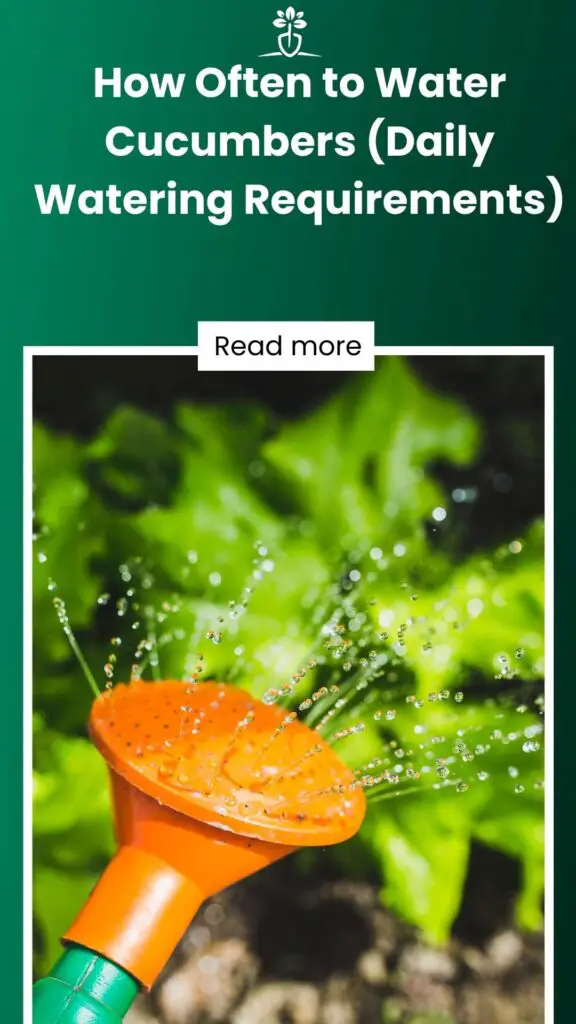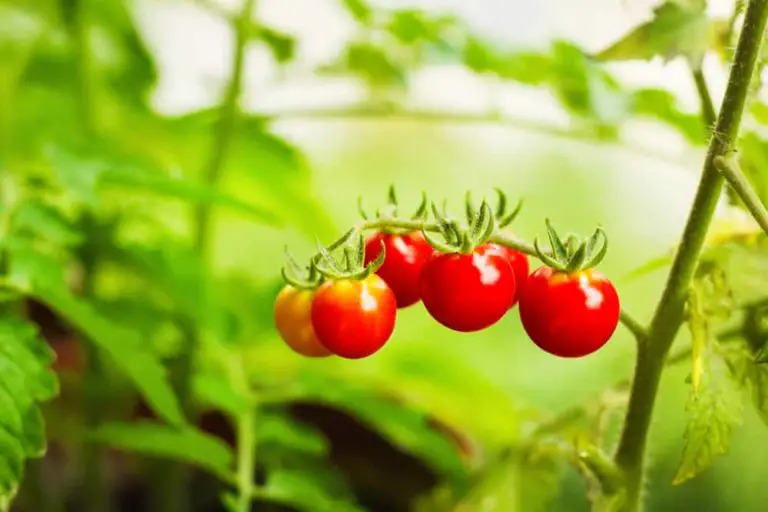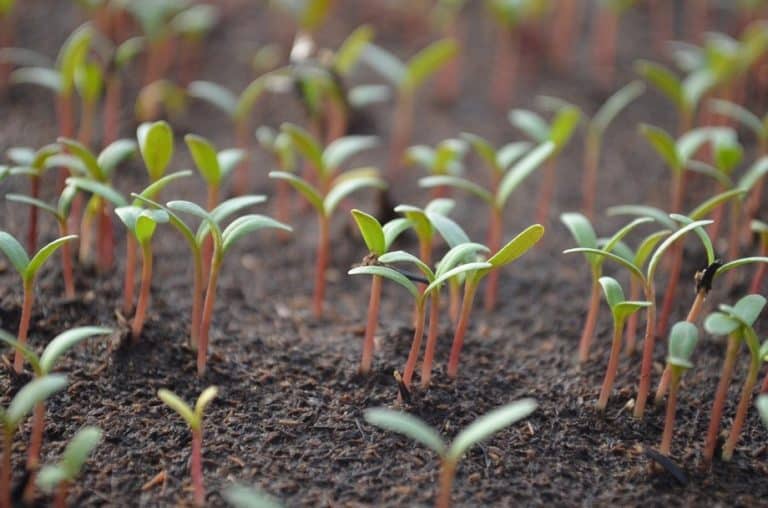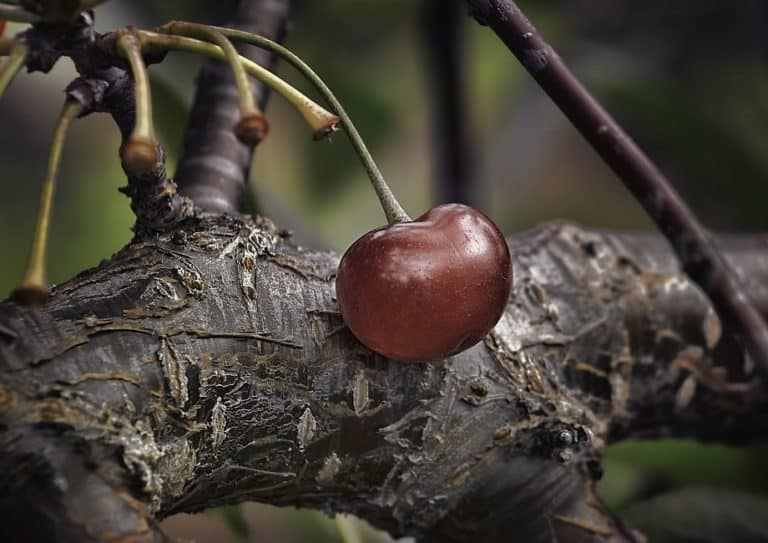How Often to Water Cucumbers (Daily Watering Requirements)
Bitter cucumbers bugging you? Give them the hydration they crave! These thirsty veggies are just looking for a giant slurp. Check out our complete guide on the cleverest method to water cucumbers and wave goodbye to those yucky-tasting ones forever!
Cucumber plants require significantly more water than most other vegetables. Cucumbers need about 1-inch of water per day to grow.
Contents
How Often to Water Cucumber Seedings
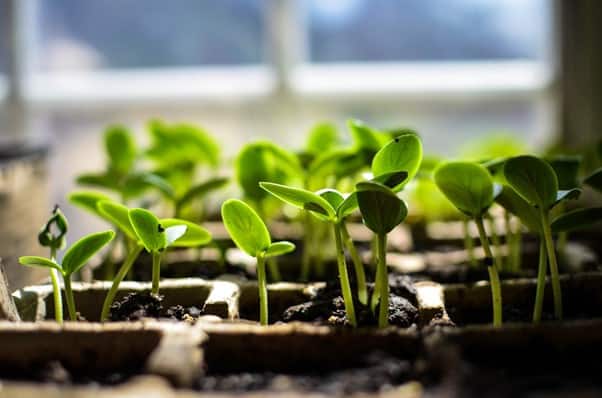
Always try deep watering cucumbers at least once per week. Furthermore, your seedlings should be about 8-12 inches apart. This will allow each seedling to develop its root system fully.
We advise checking for soil moisture. One way is to do a finger dip test.
Poke your finger in the soil and determine the soil moisture. Ideally, you’re looking for slightly moist soil. Whenever the soil beneath the surface feels dry, it’s time to water your cucumber plants.
Another thing you should be mindful of is the water pressure. Don’t spray the soil directly with water. Instead, run the water slowly. This way, you’ll not be uprooting your seedlings.
Use a hose nozzle with a soaker or mist attachment.
The long taproot and branching roots of the cucumber seedling help it access water. We recommend early watering. This will make sure your plant can develop this root system early on and improve overall plant health.
How Often to Water Cucumber Plants
Just like cucumber seedlings, you should opt for a hose with a spray nozzle or a soaker hose. An even more economical and convenient method is drip irrigation. With drip irrigation, your water wastage becomes significantly less compared to other methods.
Keep the soil moist, and your plants should remain healthy. Another trick to help hold the moisture in the soil is using mulch. A 1-3 inch mulch layer will have enough water to keep the soil moist.
How Much Water Do Your Cucumber Plants Need?

Exactly how much water your cucumber plants need depends on a lot of different things. Depending on the soil quality, the cucumber plant, and the temperature, the water requirements will vary. Let’s have a look at the different factors affecting your plant’s water requirements.
Soil
The best soil for growing cucumbers should have adequate drainage, and it should be nutrient-dense. We recommend using ground with slightly sandy soil.
You could opt for clay soil if you wish. But your cucumber plant needs good drainage. Something unachievable with clay soil.
With clay soil, the elaborate root system of your cucumber plant will hold much more water. But if you use sandy soil, the gaps between the sand particles will allow the water to drain out. So the cucumber plants are grown in clay soil and ultimately need less water.
Weather
The local weather will also be a strong determinant of your plant’s water needs. By weather, we mean humidity, wind, light, and temperature.
If the weather in your climate zone has low wind, light, and humidity, along with high temperature, your plant will be needing a lot of water. In contrast, smaller amounts of water are enough to ensure juicy, fresh-tasting fruit in hot tropical regions.
Cucumber Plant Development Stage
The bigger your plant gets, the more water it will need. Cucumbers are 90% water. So a plant at the fruit-bearing age will ultimately need more water than a newly sown seed. Your best bet is to observe how your cucumber plant absorbs moisture from the soil.
Seed Density
Whenever you’re planting cucumber seeds, you need to make sure each seed is a few inches apart from the other.
The more seeds you sow per acre of land, the higher the water requirement will be. To find out exactly how much water your land needs, invest in a soil moisture monitoring sensor or look for an evapotranspiration table.
Is 1-inch of Water Per Day Enough?
On average, 1-inch of water is what your cucumber plant needs every day. But on a hot day, you might need to check up on your plant. Whenever the temperature rises above 90F, it is recommended you water your plants twice per day.
At a temperature up to 90F once daily, watering is good enough for the plant.
The Best Time to Water Cucumbers
The most suitable time for watering cucumber plants is either at daybreak or later in the evening. Just bear in mind not to water your plants whenever there’s full sunlight.
This is a vital error a lot of gardeners make. Watering your plants in full sunlight causes them to wilt and scorch. But how? Water is supposed to cool them off, right?
The problem with watering cucumber plants in full sunlight has something to do with reflection. The water droplets sitting on the plants reflect light at it. This means your plants are receiving twice as much of the light and heat they need. Once from the sun and once by the light reflected by the water droplets.
Problems with Overwatering Cucumbers
While underwatering is a crucial issue that affects plant health, overwatering is equally problematic. Here are a few problems you might encounter.
Powdery Mildew
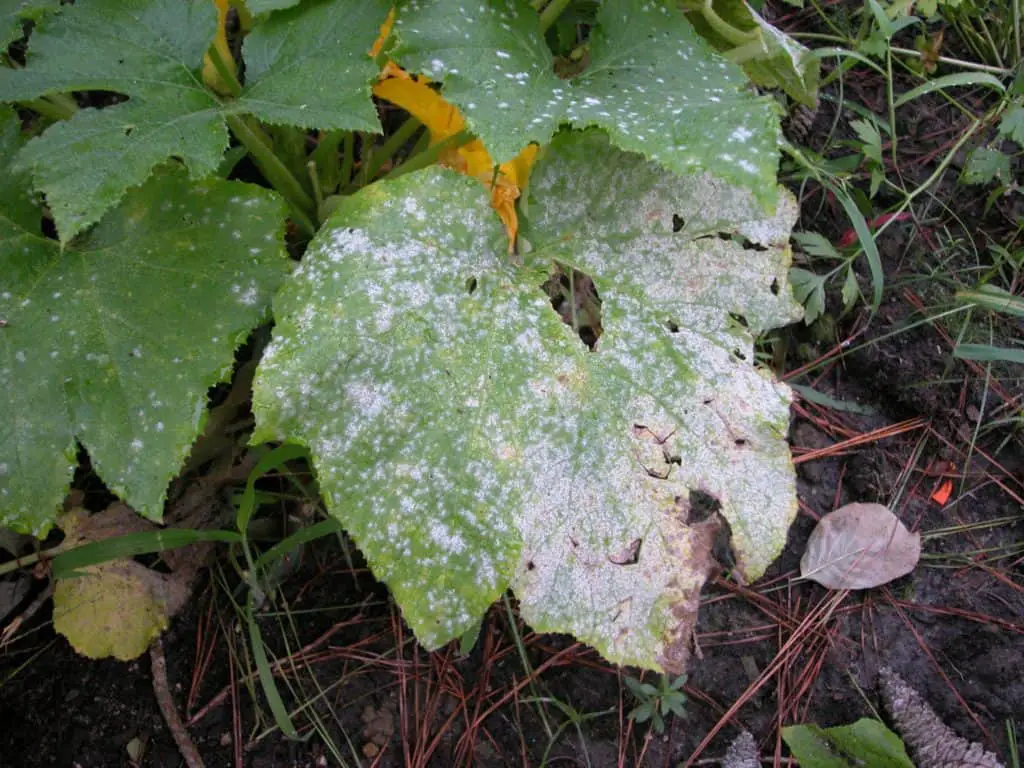
Overhead watering is the culprit behind powdery mildew. Older leaves are more susceptible to this problem. If you ignore it, the leaves of your plants will turn yellow and wilt.
How to Fix It?
Although the fruits aren’t directly affected by mildew, yellow leaves aren’t significant for photosynthesis or good fruit. If you see your leaves are starting to turn yellow, try using an anti-fungal spray.
You can even use your DIY spray. Mix up the baking soda, dormant oil, and some antibacterial soap in some water.
Yellowing of Leaves
Yellow leaves are an alarming sign of overwatering. This implies that the excess moisture in the soil is making it difficult for the plants to absorb nutrients. The lack of nutrients thereof results in bitter and tasteless fruits.
How to Fix It?
Try watering your plants less often and be careful about the soil moisture.
Rotting Roots
Cucumber plants are highly susceptible to root rot when grown in clay soil. Clay soil absorbs so much moisture that the roots of the cucumber plants start developing root fungus.
How to Fix It?
The easiest fix for root rot is using mulch. Mulch will give your plants enough drainage to remove excess water.
But it would help if you kept the mulch spread out. If the mulch is too dense, your plant won’t get enough sunlight. Typically a 1-3 inch layer of mulch is enough to retain adequate moisture.
Conclusion
Planting cucumbers is an art. For the delicious fruits to grow, you must take good care of your plants. Follow everything we’ve laid out here and say goodbye to all the bitter cucumbers.
